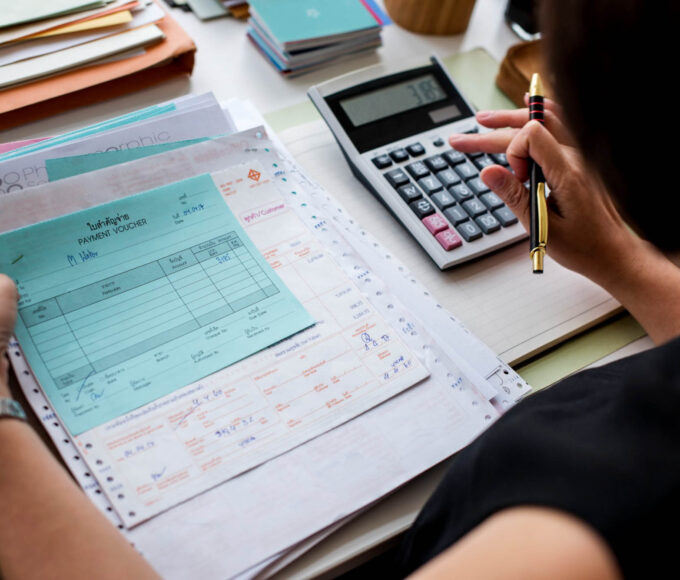In business, invoices are much more than just bills. They are official records of the sales that indicates what was sold, to whom, at what price, and under what terms and conditions. An invoice acts as proof of a transaction and is important for both the buyer and the seller.
But not all invoices are the same. Different situations require different types of invoices. For example, the invoice you send for an international shipment will not look the same as the one you send for a monthly subscription.
In this blog, let’s look at the different types of invoices, their purpose, and when businesses usually use them.
Different Types of Invoices
- Proforma Invoice
A proforma invoice is a draft invoice sent before the goods or services are delivered. It gives the buyer an idea of the cost but is not a final bill.
- Use: To give buyers an estimate.
- Example: International trade or bulk orders.
- Commercial Invoice
A commercial invoice is used in import and export transactions. It has all the details needed for customs, such as product description, country of origin, and shipment details.
- Use: For customs clearance and duty calculation.
- Example: Export businesses.
- Sales Invoice (Standard Invoice)
This is the most common type. It is issued after goods or services are delivered and includes the amount due, taxes, and payment terms.
- Use: To request payment and keep records.
- Example: Retail shops, service providers.
- Tax Invoice
A tax invoice includes tax details like GST or VAT. Businesses registered under tax laws are required to issue this.
- Use: To show tax charged and allow buyers to claim input tax credit.
- Example: Businesses registered under GST/VAT.
- Credit Invoice (Credit Note)
A credit invoice reduces the amount the buyer has to pay. This happens if goods are returned, damaged, or a discount is given.
- Use: To adjust the invoice value downward.
- Example: Refunds or product returns.
- Debit Invoice (Debit Note)
A debit invoice increases the amount payable. It is issued when the seller has undercharged or additional services are added.
- Use: To adjust the invoice value upward.
- Example: Extra charges added after billing.
- Timesheet Invoice
A timesheet invoice is used by professionals who charge by time. It shows the number of hours worked and the rate per hour.
- Use: To bill based on time.
- Example: Freelancers, consultants, lawyers.
- Recurring Invoice
A recurring invoice is sent automatically at regular intervals, such as monthly or yearly.
- Use: To simplify regular billing.
- Example: Subscriptions, rent or memberships.
- E-Invoice (Electronic Invoice)
An e-invoice is created in a digital format that is reported directly to the tax system. Many governments require it for large businesses.
- Use: To automate reporting and prevent fraud.
- Example: Large businesses with high invoice volumes
- Interim Invoice
An interim invoice is used when a project is long-term and payment is collected in parts instead of at the end.
- Use: To keep cash flow steady.
- Example: Construction projects, consultancy services.
- Final Invoice
A final invoice is issued when a project or contract ends. It shows the total amount payable after adjusting any advance or interim payments.
- Use: To close the billing cycle.
- Example: Project-based businesses.
- Past Due Invoice
If a customer misses the payment deadline, a past due invoice is sent as a reminder. It may include late fees.
- Use: To collect overdue payments.
- Example: Any business with delayed clients.
- Mixed Invoice
A mixed invoice contains both credit and debit adjustments. For example, part of the goods is returned (credit) and extra services are added (debit).
- Use: To simplify adjustments.
- Example: Businesses with complex billing.
- Self-Billing Invoice
In this case, the buyer prepares the invoice instead of the seller. It is done when there is a mutual agreement in place.
- Use: To save time in repeated transactions.
- Example: Government contracts, wholesale trade
- Progress Invoice
A progress invoice is used when payment is based on the percentage of work completed.
- Use: To collect payments in stages.
- Example: Construction, software projects, manufacturing.
Quick Comparison Table of Invoice Types
| Invoice Type | Purpose | Example Use |
| Proforma Invoice | Gives cost estimate | International trade |
| Commercial Invoice | Customs clearance in trade | Export/import businesses |
| Sales Invoice | Request payment for sale | Retail, services |
| Tax Invoice | Show taxes and allow credit | GST/VAT businesses |
| Credit Invoice | Reduce amount payable | Refunds, returns |
| Debit Invoice | Increase amount payable | Extra charges |
| Timesheet Invoice | Bill by hours worked | Freelancers, consultants |
| Recurring Invoice | Regular billing | Subscriptions, rent |
| E-Invoice | Digital tax-compliant invoice | Large businesses |
| Interim Invoice | Collect partial payments | Long-term projects |
| Final Invoice | Close billing after completion | Project businesses |
| Past Due Invoice | Reminder for late payments | All businesses |
| Invoice Type | Purpose | Example Use |
| Mixed Invoice | Combine credit & debit adjustments | Complex billing cases |
| Self-Billing Invoice | Invoice made by buyer | Government contracts |
| Progress Invoice | Payment by project percentage | Construction, manufacturing |
Tips for Effective Invoicing
- Use clear formats: Always include invoice number, date, buyer and seller details and payment terms.
- Be timely: Send invoices quickly after delivering goods or services.
- Use software: Tools like Gbooks or Tally can help create error-free invoices.
- Track payments: Follow up on overdue invoices without delay.
- Stay compliant: Make sure your invoices meet tax and legal requirements.
Conclusion
Invoices are not just about asking for money. They are legal, financial and the professional tools that keep a business running smooth and simple. From the standard sales invoices to the specialized ones like proforma, recurring or the tax invoices, each type has its own purpose and goal.
By using the accurate invoice for the right situation, businesses can keep themselves well- organized, structured, can easily maintain proper records and data, also ensure steady cash flow. Whether you are a freelancer, small shop owner or a large company or any established business knowing well about these invoice types will make your financial management much smooth and easier. By applying these above given invoicing methods effectively, you can minimize the errors, defect or mistakes, improve client trust and confidence and build a stronger financial foundation for long-term business growth and success, while ensuring compliance with all legal and regulatory requirements.
If you looking for best invoicing software to create accurate and professional invoices then visit Gbooks.io.
 gbooksOctober 16, 20254 Mins read147 Views
gbooksOctober 16, 20254 Mins read147 Views












Leave a comment